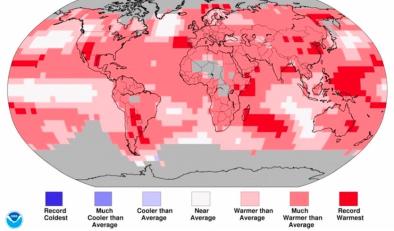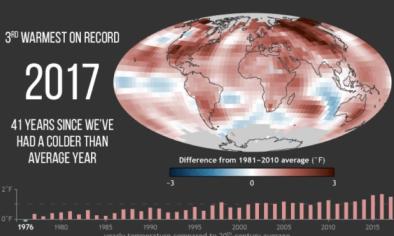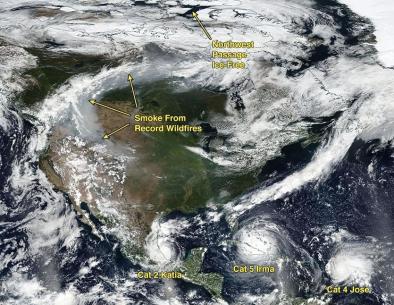Science Source
The extreme El Niño of 2015–2016 and the end of global warming hiatus
- States that slower rates of increase in global mean surface temperature (GMST) after 2000, dubbed “global warming hiatus,” recently gave way to a rapid temperature rise
- States that this rise coincided with persistent warm conditions in the equatorial Pacific between March 2014 and May 2016, which peaked as the 2015 extreme El Niño
- Shows that the El Niño–Southern Oscillation (ENSO) tightly controls interannual variations in atmospheric heating rate in the tropics (r > 0.9), allowing the construction of a simple, physically based model of GMST variations that incorporates greenhouse gas emissions, ENSO forcing, and stratospheric sulfate aerosols produced by volcanoes
- The model closely reproduces GMST changes since 1880, including the global warming hiatus and the subsequent temperature rise
- Results confirm that weak El Niño activity, rather than volcanic eruptions, was the cause of the hiatus, while the rapid temperature rise is due to atmospheric heat release during 2014–2016 El Niño conditions concurrent with the continuing global warming trend
Related Content
Headline

Jan 19, 2018 | Weather Underground
NOAA: Earth Had Its Third Warmest Year on Record in 2017
Headline

Jan 19, 2018 | NOAA Climate.gov
2017 was Earth's third-warmest year on record
Headline

Jan 8, 2018 | The Sydney Morning Herald
'Quite surprising': Near-record hot 2017, heat burst point to warming world
Headline

Jan 1, 2018 | Weather Underground | Category 6
Top Ten Global Weather/Climate Events of 2017: A Year of Landfalls and Firestorms


